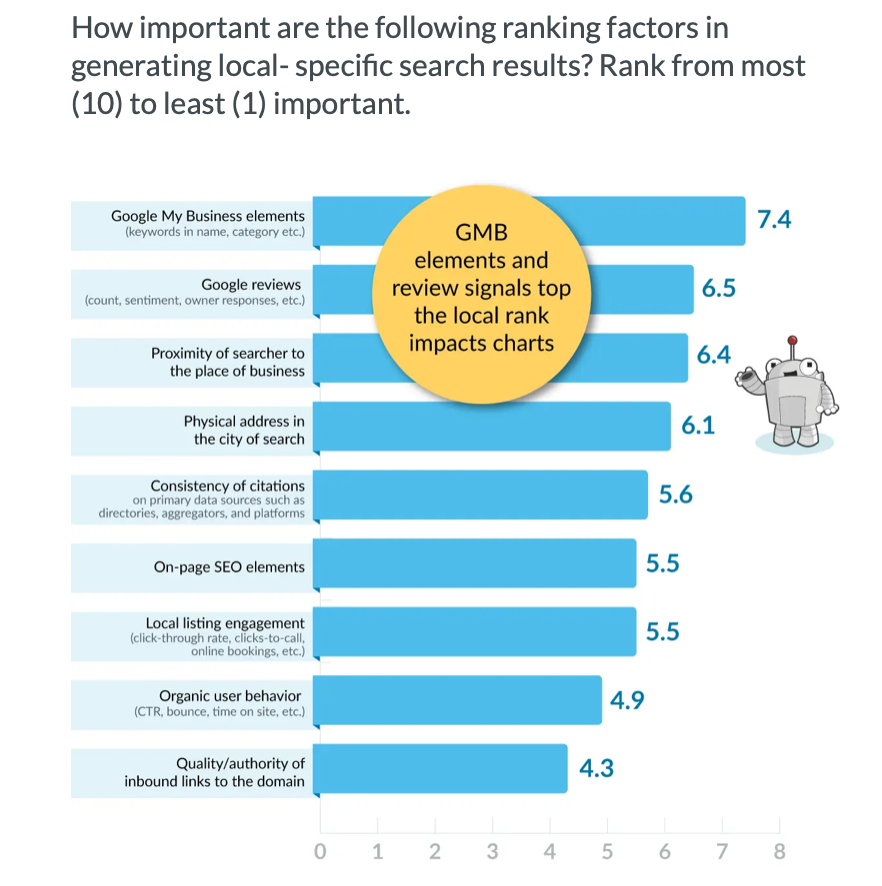Get in touch
+44 1632 96099
mymail@mailservice.com
“My website’s not working – it’s failing to drive new leads for my business”. Sound familiar? If yes, it’s probably because ‘Website not working’ is a primary reason given for customer churn at digital agencies. The trouble is, in my experience, website customers are more than 4 x times stickier than non-website customers. If the same can be said for you, this presents a far greater churn risk for your agency’s full suite of digital products. So, if you’re keen to avert churn risk, drive website performance and help plug your agency’s leaky churn bucket, then the No.1 item on your ‘To-Do list’ should be to carry out a ‘NAP check’ for your website clients.
A what, now?
‘NAP’ stands for business ‘Name, Address and Phone number’. This may sound basic, but it counts for a lot.
NAP is a key ‘trust’ indicator and driver of website performance
Of course, there’s no disputing your client’s ‘website content is king’. But accurate and consistent online business citations are fundamental ‘trust’ indicators and a key driver of website performance. So ‘a NAP check’ is an excellent place to start to combat customer complaints of ‘My website’s not working’. It will help to avert churn risk for your digital agency.
Because promoting accurate and consistent business citations across different online platforms for your SMB clients enables Google to:
- Authenticate their business
- Determine their primary location
- Affiliate their overall online presence and reputation
Which, in turn, informs their domain authority and ranking power. Moreover, by promoting accurate and consistent citations on different platforms, this will reassure website visitors that your clients ‘ are local and can serve me ‘. Which is a key driver of new customer conversion.
The risks of non-verifiable citations for your clients
If your clients promote inaccurate or inconsistent business citations on different platforms or NAP is missing, then for all Google knows they could be in a far-off place running a scam, trying to trick innocent folk out of their hard-earned cash. The chances are, they won’t be trusted by visitors either.
Google may even determine that your clients’ single business online properties belong to multiple different businesses. This adds up to low domain authority and is detrimental to your clients ranking.
Correct NAP citations may count for even more in the future
Arguably, correct citations will gain even more importance in the future. As a result of the enormous growth in ‘local search queries’, driven by Covid-19.
‘Available near me’ searches increased 100% globally in 2019-2020. New ‘direct-to-consumer trading methods came into play, like ‘Click and collect’, ‘Curb-side pick-up’ and ‘Free local delivery’. This presents an immense opportunity for your clients that serve a local customer base – and your digital agency alike. It affords you the opportunity to cash in on Google’s c.1 trillion local organic SERP returns (or free clicks) per year.
Read on for the Top 10 Checks you can do on your clients’ NAP data to avert churn risk !
Check No.1 Is your client’s address ‘dedicated’ and ‘verifiable’?
Google likes every business to have its own, dedicated, verifiable bricks and mortar address (and preferably local landline). This means, if your clients promote ‘false addresses, PO boxes, virtual/shared offices or mailboxes’, this will not ‘cut it’. It will almost certainly lead to complaints of ‘my website’s not working, feeding that leaky churn bucket.
It’s important to note, back in 2018 the top 2 negative local ranking factors for SMBs were cited as:
- ‘GMB Listing detected at a false address’
- ‘Address is PO Box, UPS Mail store or other False address’
Fundamentally, it comes back to ‘trust’. And the same trust principles apply in 2021 and extend to websites and other online platforms for your small business clients. Ultimately, if your client is a business, money is changing hands for a product or service. So, Google needs to trust your SMB clients ‘ are who they say they are and they do what they say they do, in the location they say they do it (and to good effect) ‘ before it will return their pages to answer relevant searchers queries.
Check No.2: Does your client promote accurate NAP on GMB?
Did you know, GMB is Google’s primary source data for SMBs business details? So, with a view to driving website performance and averting churn risk, it’s a good idea to make sure your clients have:
- Claimed their GMB listing
- Promote their NAP details accurately on GMB and on all other digital platforms for their business. This includes their:
- Website
- Social
- Reviews platforms
- Online directory listings – especially the big ‘local’ players like Yelp
- Make sure their GMB profile includes a URL link to their website.
Check No.3: Look out for inconsistent business cita tions
Over and above ‘NAP validity’, it’s important to look out for inconsistent business citations on different online platforms for your clients too. This will almost certainly impede website performance. Rewind to 2018:
“NAP inconsistencies have been identified as the third highest negative factor affecting local rankings. Consistent NAP citations across your website, review sites, social media profiles, and directory listings acts as a positive ranking factor. However, if search engines find inconsistencies in the citations, in the interest of caution and their own reputation, they promote businesses with accurate and consistent NAPs over yours.”
( econsultancy, 2018 )
Fast forward to 2020 and digital marketing professionals for SMBs deemed ‘ Consistency of citations’ the No.5 local ranking factor. But it’s important to note, the No. 4 local ranking factor was ‘Physical address in the city of search’. And the No.3 local ranking factor was ‘proximity of searcher to the place of business address’.
And all of these factors relate back to NAP*. This serves to highlight why NAP still demands our focus in 2021. It also explains why NAP checks (and fixes) could go a long way to driving website performance and averting churn risk for your digital agency.
*In case you were wondering – the No.1. local ranking factor is Google My Business elements. And the No.2 local ranking factor is Google Reviews. Both spell potential for new agency revenue streams in 2021 and beyond. Congratulations – the smartest people always read the small print.
Check No. 4: Look out for inconsistent category citations
It’s definitely worth checking – while you’re at it – that your clients ‘business categories’ are promoted consistently everywhere online. Because ‘Inconsistent categories’ was cited as the No.3 negative local ranking factor for SMBs back in 2018.
Aim to promote your clients’ categories consistently in line with GMB (or as much as possible, given all platforms categories vary). Then Google knows where your client’s business expertise lies and can confidently return their pages to answer relevant queries.
Check No.5: Does your client have multiple GMB profiles?
You’ll be surprised how often businesses create listings, forget about them, and then create new ones. Multiple GMB profiles mean your clients’ miss out on the chance to ‘aggregate’ reviews and ratings. What’s more, some searches may return an inferior, non-optimised version of your client’s Knowledge Panel.
Try Googling:
- Variations of your clients business name, eg: try adding/omitting ‘Ltd’
- Their business name with/without their location
- Their business name + different descriptions of their core services (or categories) eg: ‘Customers Name Accountants’ v ‘Customers Name Financial Services’
Check the SERPs each time and look out for variations of your clients ‘Knowledge Panel’. If you discover a client has multiple listings, it’s important to claim and merge them.
Check No.6: Do your clients operate multiple businesses out of a single address?
It’s not unusual for people to be operating two different business types from a single home address. Advise your clients to ‘promote your home address on both websites (accurately and in line with GMB). This way, Google can authenticate both businesses and determine their primary location. But set up a second landline number and promote dedicated phone and email contact details for your two different businesses’.
In line with Google’s objective of delivering a good end-to-end customer experience, they can be sure an ‘expert’ will answer the phone or a customers email.
Otherwise, imagine a scenario where the husband is a hairdresser and the wife a plumber and you call up with a plumbing emergency and the husband (hairdresser) answers the phone. That’s not helping anybody.
In a scenario like the one above, your clients’ pages are unlikely to rank if they don’t promote dedicated contact details to serve their business.
Check No. 7: Look out for missing NAP for SAB clients
Missing NAP on websites and other online properties is a very common occurrence. Especially for SABs (Service Area Businesses), like tradespeople who operate out of their home address.
SABs tend not to promote their address online because:
- They assume they don’t need to as they’re not a ‘destination business’.
- It raises concerns about security eg: they fear their equipment might be stolen or are worried about their family’s privacy.
- Or perhaps they serve a wider customer-base (eg: nearby towns too) and fear that by promoting their address, this will limit their ability to rank further afield
If your client’s NAP is missing from their website or other online properties, to avert churn risk and drive website performance, first it’s important to check:
- Have your clients claimed their GMB listing?
- Does their GMB listing promote accurate NAP details for their business?
- Does their GMB listing include a URL link to their website?
The good news is, your SAB clients can validate their home address, state ‘locations served’, and opt to ‘hide their address’ on GMB. Unfortunately, it’s not quite that easy for websites and other platforms. However, if your clients have concerns about security, omitting their house number from their website could help mitigate risk.
If your SAB clients omit their house number but promote their road, town and postcode and clearly state other locations served (e.g nearby towns) on every page of their website this will go a long way to helping Google ‘join the dots’. It should enable the search engine to authenticate their business, determine their primary location and affiliate their overall online presence and reputation, driving website performance. (That’s providing your client’s business has a good reputation, of course).
Check No. 8: Is NAP promoted on every page of their website?
If you want to drive website performance and avert churn risk, add NAP to the website footer. Or if it’s a ‘destination’ business, you might add it to the website header.
Promoting NAP details on every page of your client’s site will help drive leads for their full mix of products or services. It will give every page (that should promote a unique product or service and feature a unique set of ‘cluster keywords’) the best possible chance of being authenticated, trusted and returned in Google’s organic SERPs to answer relevant search queries.
Check No.9: A local landline means your clients can capitalise on more free clicks
A local landline is a key local organic ranking factor. This means, if your clients’ promote a landline number, they could capitalise on more local organic SERP returns. Promoting a local landline will instantly instil trust in visitors that your clients ‘ are local and can serve me ‘. What’s more, it will satisfy Google’s need to ‘authenticate their business, determine their primary location and affiliate their wider online presence, driving website performance.
Check No.10: Is your client’s phone number set as ‘click-to-call’?
Make sure your small business clients phone number is set as ‘click to call’ on their website pages and other platforms. This makes it easy for their customers using mobiles to get in contact, improving the customer experience and driving new customer conversions.
10 Important checks to drive website performance and avert churn risk
In summary, important NAP checks you need to undertake as a first step to combating complaints of ‘my website’s not working’. This is with a view to driving performance and averting website churn risk for your digital agency:
- Invalid address eg: Shared office / PO Box – cannot be verified/’trusted’
- Non-verified GMB listing or inaccurate NAP promoted on GMB
- Inconsistent NAP: GMB, website, social, reviews platforms & directories
- Inconsistent categories: cite in line with GMB (same platforms as above)
- Multiple GMB listings – claim and merge them
- Missing NAP for SABs – suppress house no. on website to minimise risk
- Shared address – promote unique phone/email details for each business
- Missing NAP, all website pages – add to header/footer to drive more leads
- Missing Local Landline – promote this to cash-in on more organic ‘free clicks’
- Set phone numbers as ‘click-to-call’ to drive conversion for mobile users
Churn prevention – final pep talk
If your client’s NAP (Business Name, Address & Phone number) is invalid, inaccurate, promoted inconsistently or missing on different online platforms, then fix it now!
Because your small business clients that serve a local customer base will almost certainly be losing ground to local competitors and that doesn’t bode well for your agency’s retention plans.
But I don’t want to end on a dystopian note. No, rather – something more uplifting. To quote one of my favourite Economist poster ads of old:
‘Impromptu brilliance is prompted by earlier diligence.’
(Outdoor poster ad for The Economist, circa. 2000)
Get ahead of the game, is what I’m trying to say. Yes, you can tackle churn on a reactive case-by-case basis by prioritising a NAP check next time one of your SMB clients complains: ‘My website’s not working’. But, bearing in mind website customers are notably ‘stickier’ than non-website customers, presenting a far greater churn risk for your agency, I recommend a pro-active approach instead.
Why not take churn prevention measures en-masse, by carrying out a NAP check on behalf of your website client-base before they turn around and complain: ‘My website’s not working’? Set out to educate your SMB clients about NAP best practices, strive to improve website performance and customer satisfaction, and avert future churn risk for your digital agency.
May the SEO force be with you.
Get started – run a citations scan today on Insites
Are your clients’ citations (NAP details) promoted accurately and consistantly everywhere online? Or do you need to take steps to avert churn risk and combat customer complaints of ‘My website’s not working’? Try Insites for yourself, and book a call with us.












